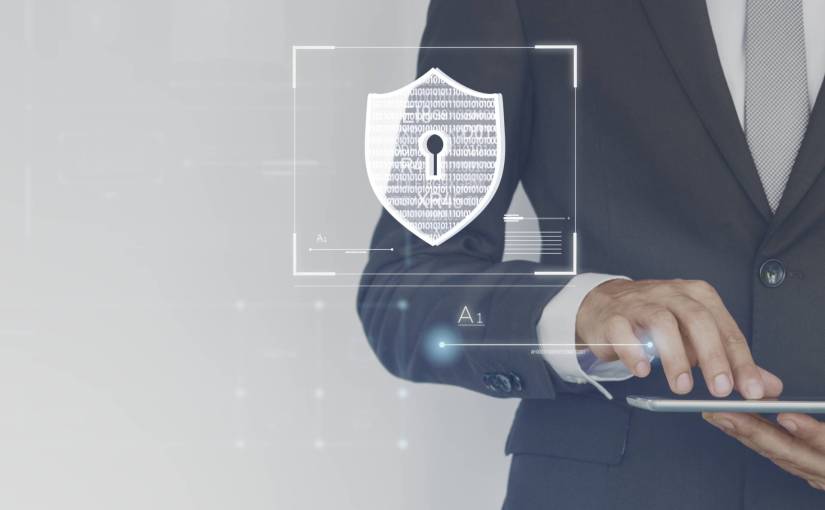“I forgot my password. Please, help me. I have an urgent order — please!?!”
Quite an innocent start that happens quite often in chats with your customer care agents, isn’t it?
But that’s how undermining your customer service security may actually begin.
Did you know that cyberattacks target 43% of small businesses?
Your customer care department can’t be 100% immune to security risks.
“Wait,” you may say. “Why would hackers target my customer support center particularly?”
You may think that approaching 175 zettabytes (this is the number 175 followed by 21 zeros) of collective data by 2025, several gigabytes of your customers’ details may seem unimportant to scammers and cybercriminals.
It happens so that they tickle the interest of fraudsters on the web, especially if they notice flaws in your protection.
On that account, you should be armed with hands-on strategies on how to improve your customer service security. Continue reading to find out why exactly you need those and how to apply them in practice.
Why Bother with Customer Service Security?
Personal data security is a critical factor in driving data governance success. Neither your service personnel nor customers would like to become victims of manipulative and fraudulent online activities. At the same time, robust safety equals securing customer trust. Moreover, a strict and sufficient privacy policy gives you the edge over your competition.
Here’s the list of facts and stats that turn out to be somewhat persuasive reasons to prioritize consumer privacy and make you look for the possible ways to boost your client service security:
- For example, 59% of buyers wouldn’t want to do business with a company that underwent a cyberattack in the past year.
- The average cost of a data breach was 4.24 million in 2021.
- Cybersecurity Ventures predicts global cybercrime costs to reach $10.5 trillion annually by 2025.
- Symantec recorded a 48% increase in cyberattacks with malicious email attachments via Office files.
- COVID-19 was a common lure in 6.9 million phishing emails intercepted by Trend Micro.
- Ransomware attacks hit a new business every 10 seconds during 2020.
How Cybercriminals may Get to Your Support Team and Clients
Security incidents become even more likely because cybercriminals know their job very well indeed. So first, they look for the most vulnerable targets exposed to hazards and risks: passwords, emails, unprotected networks, IoT devices, mobile phones, personal laptops, etc. Then, having analyzed the vulnerabilities, they work out a sly plan on how to trick someone into clicking a malicious link or giving away some info.
Here’s how they do that:
-
They manipulate emotionally.
Attackers’ goal usually boils down to gaining passwords or any other sensitive data or forcing their victims to download some files using the most winning phishing email messages that appeal to such emotions and feelings as anxiety, irritation, and enthusiasm to help, shame, misery, selfishness or greed.
The characteristic features of such psychological manipulations are:
- Sense of urgency
- Catching off guard
- Enhanced emotional state
- Credibility of information
Cybercriminals use one more way to appear believable. Namely, they pretend to be a customer when contacting a support agent or vice versa – they may camouflage as a customer care representative when reaching out to a client.
-
They disguise themselves as your workers or clients.
A severe disguising pitfall is that attackers use some basic information about your customer or support agent to foster confidence: customer details, loyalty schemes, exact time of transactions, and other previously collected data. Therefore, their statements sound genuine and persuasive.
That’s when the challenges of identifying and apprehending the cybercriminal appear to be the toughest.
The process of convincing may be executed via various forms of communication: email, phone, chat, DM via social media, etc. However, in all cases, it is extremely difficult to assess electronic evidence properly regarding criminal investigations.
A business email compromise is one of the hackers’ most widespread methods to con their way into someone’s trust.
For example, a combination of social engineering and phishing helped Chinese hackers to masquerade as the company’s CEO and steal $18.6 million.
-
They “break into” devices physically or distantly.
Direct physical access to one of the devices owned by a support person or a customer gives hackers a chance to get the needed information straight away or upload some programs so they can later access data distantly.
Often, these are spyware programs to track credit card numbers, passwords, chats, etc.
Connecting to an insecure network, your agents are exposing their systems to risks as well.
Sometimes, malicious software like keyloggers may be used to capture pin codes, account numbers, passwords, email IDs, etc. As an alternative, cybercriminals may steal data using malicious mobile apps that require admin permission or access to contacts, microphones, accounts, etc.
It can be a trifling matter for them if you don’t enhance your customer service security. Below, we explain how you can do that using eight practical ways and some expert recommendations.
Enhancing Your Customer Care Security: 8 Proven Ways + Expert Advice
Where do you start?
With planning, of course.
Hackers and scammers have their own tactics and know how to play this game. And if you want to protect your business, support agents, and customers, you need to think through your individual “game plan.”
-
Work out a cybersecurity strategy
Mistakenly, small businesses believe they don’t need any strategy to maintain customer service security, even though they suffer the most from cyberattacks. However, suppose you have a closer look at the small business cybersecurity trends. In that case, you’ll be surprised that cyber criminals don’t want to mess with large corporations but rather shift their focus on smaller ones.
Anyway, it would help if you always had a strategy and a plan to minimize safety hazards in your support team. In developing a cybersecurity strategy for your online business, don’t neglect the safety of your client care department.
Working out an effective strategy, consider new types of threats and fraudulent schemes like, for instance, COVID-19 cybersecurity scams.
-
Organize training in IT security
You can’t deny the human factor in IT security. Virtually, your employees are making your business vulnerable from within. And if you think that annual security training in your support team is completely enough for your personnel to handle safety attacks, you’re mistaken. To start with, you should implement a security awareness program in your company. Regular and frequent training are must-haves for your cybercrime prevention strategy.
To enhance customer service security and make a support team tech-savvier in terms of data protection, follow Joe Thong’s recommendations which he uses successfully in his customer service center to organize and manage security training:
- Create a digital information board or use project management software to share news, updates, trends, and topics in cybersecurity
- Offer courses in IT security (SANS Institute, Udemy or edX cybersecurity courses, etc.)
- Hire skilled cybersecurity professionals to train your workers
- Teach your teams how to act according to an incident response plan
- Try “live fire” simulations, when some agents from your customer service team play the role of “attackers” while the others become “victims.”
- Invite former hackers and let them share their secrets with your customer support staff
- Hold such training regularly (monthly will do)
You can also optimize your company’s data security program overall by training your employees regularly and teaching them how to “swim” well in data security.
-
Take advantage of automated solutions for protection
Artificial intelligence is already transforming customer service and helping companies with automation. But business leaders and entrepreneurs often forget that they can also use automated systems for risk-adaptive protection of their services.
Furthermore, data privacy management tools can help you avoid security headaches. For example, you can easily automate the safe sharing of customers’ sensitive data. One of the ways to do that is redaction software. It’s a tool that searches and removes contents containing confidential information or private details.
-
Enable multi-factor authentication
A two-factor authentication system may be somewhat fragile as attacks get more sophisticated. Specifically, the issue with authentication is noticeable in digital banking. And it becomes critical for companies to protect their customers’ payment details. Therefore, enabling multi-factor authentication (MFA) may be a go-to to boost your customer service security.
Do you believe in predictions? What about cybersecurity predictions?
It turns out they may be true because password days are indeed numbered. Amazon Web Services, for instance, supports a U2F security key as an MFA device.
At the same time, passwordless authentication is a new revolutionary trend in FinTech.
-
Use a separate controlled environment for your security system
One of the primary reasons for creating a separately managed system is the convenience of testing and analysis of your client service safety protocols and an overall security level. Crucially, you must also address the cybersecurity assessment and audit confusion.
Another reason for such a controlled environment is the ability to review customer representatives’ activities and verify how well they safeguard customers’ individual data and deal with possible safety threats.
Segmenting IT networks and ensuring robust device management will help you protect connected machines from customer data leakage if we talk about industrial IoT security.
You might remember the example of a massive breach of Target’s computer network via an Internet-connected heating system in 2014.
-
Choose a secure cloud service provider.
As more and more organizations tend to implement cloud-hosted software solutions, they take advantage of the SaaS security best practices.
You should decide wisely to whom you can entrust your customers’ data. That may become, in fact, the point of no return for your company. However, you can kill two birds with one stone with a reliable partner and managed VPS cloud hosting. For one thing, you outsource the management of all aspects that concern your data safety to a trusted agency. For another – you can see a considerable boost in security after moving to the cloud.
Indeed, 94% of businesses noticed security improvements after adopting cloud solutions. Such behemoths of online services as Netflix, Etsy, PayPal, and eBay have already been enjoying the benefits of cloud computing.
Selecting an efficient and secure cloud service provider, use the following criteria:
- Service roadmap and tech stack
- Standards and certifications
- Reliability and scalability
- Company’s partners
- The healthiness of its online profile
Still, you may never know what kind of attacker lurks around the Internet’s corner. You can’t possibly stop the evolution of hacking.
As everyday hackers invent new tools and techniques that may jeopardize or even destroy your strategy to strengthen customer service safety, you must be prepared to cope with the unknown.
-
Take proper precautions and play the game of anticipation
Continuous, ongoing monitoring for potential leaks is highly beneficial for businesses that care about their customer data and reputation.
In addition, you may use the principle of least privilege – don’t give support agents unnecessary administrative access to customers’ details and review permissions periodically.
Another preventive measure is to encourage a culture of security in the workplace.
Finally, think of a cybersecurity disaster recovery plan and invest in prevention.
-
Create a security risk management department
Understanding cybersecurity posture will help you to know when exactly you need to unfold a risk management program.
A security risk management team assesses risks based on the likelihood of threats, identifies and employs risk mitigation measures (IT security training programs, dynamic data backup, software updates, multi-factor access authentication, etc.), and monitors internal data usage, among other things.
Security risk managers can also develop effective next-gen network security strategies to avoid possible cyber dangers and their repercussions.
One Way or Another: You Need to Improve Your Client Service Security Now
Security isn’t provided to your company by default. In this article, you have seen some clear reasons why the topic of cybersecurity concerns your business and why you need to improve your customer service security constantly.
We have also guided you on how to do it fruitfully using our suggestions that will help you see safety enhancements in action.
Failing to take data security seriously is one of the biggest cybersecurity mistakes businesses are still making.
Even if you know that absolute security doesn’t exist, you should also understand that there’s always room for improvement. You may try some of the above tips right now because what if cybercriminals are already working out a plan to bring your business down? Who knows when they decide to strike?
Featured Image Credit: Provided by the Author; Thank you!











